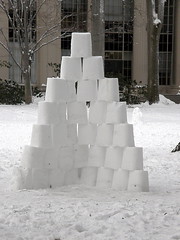It sounds counter intuitive, doesn’t it? And I suppose it’s a little bit of a misnomer. Really, in this case, we’re less burying the clue and more building it.
You can use this to indicate in a very tight POV (third or first) to help show that your character is deceiving himself or herself.  In this case, the character “doth protest too much,” insisting so much that things are a certain way or s/he feels a certain way that it begins to ring hollow. This can be a difficult balance, because less intuitive readers may not be able to read between the lines of the repetition.
In this case, the character “doth protest too much,” insisting so much that things are a certain way or s/he feels a certain way that it begins to ring hollow. This can be a difficult balance, because less intuitive readers may not be able to read between the lines of the repetition.
The repetition method can also be particularly useful with revealing a villain’s identity (which, admittedly, is more of a mystery genre feature, but isn’t exclusive to the genre). I’ve used this in the past by repeating scenes with the villain, similar encounters where the villain slowly escalates until we finally see what he’s capable of.
In this variation, we repeat an element—whether that’s the villain or a symbol or a trigger to flashbacks—and each time, we add another layer to the clue. In this method, naturally, we want to hold back the most important and most revealing layers until later, when the readers and the characters (we hope) solve the story’s mystery in time for the final confrontation, whether that’s internal or external.
What do you think? How would you use repetition to build or bury a clue?
Photo by Dan4th Nicholas

